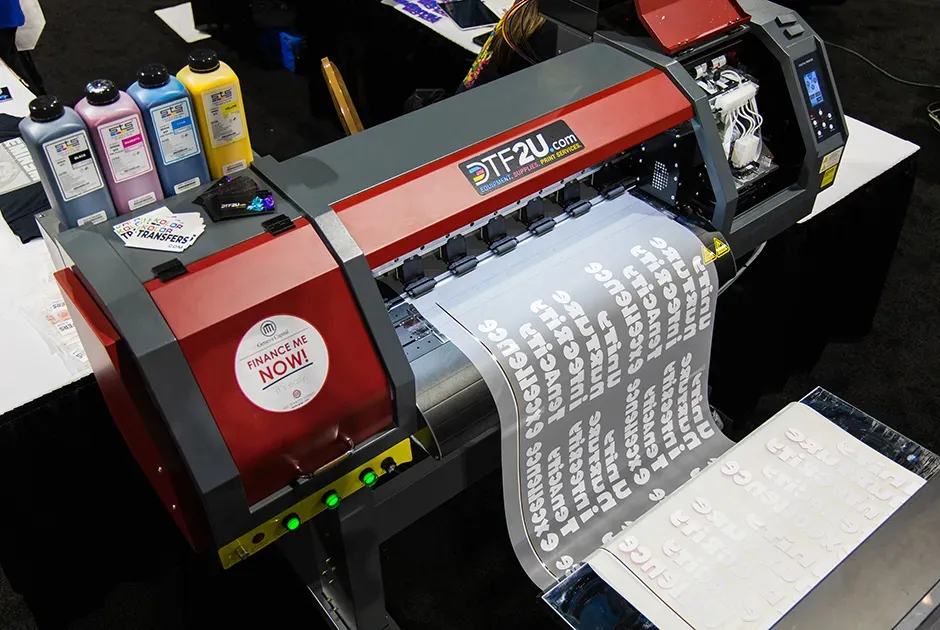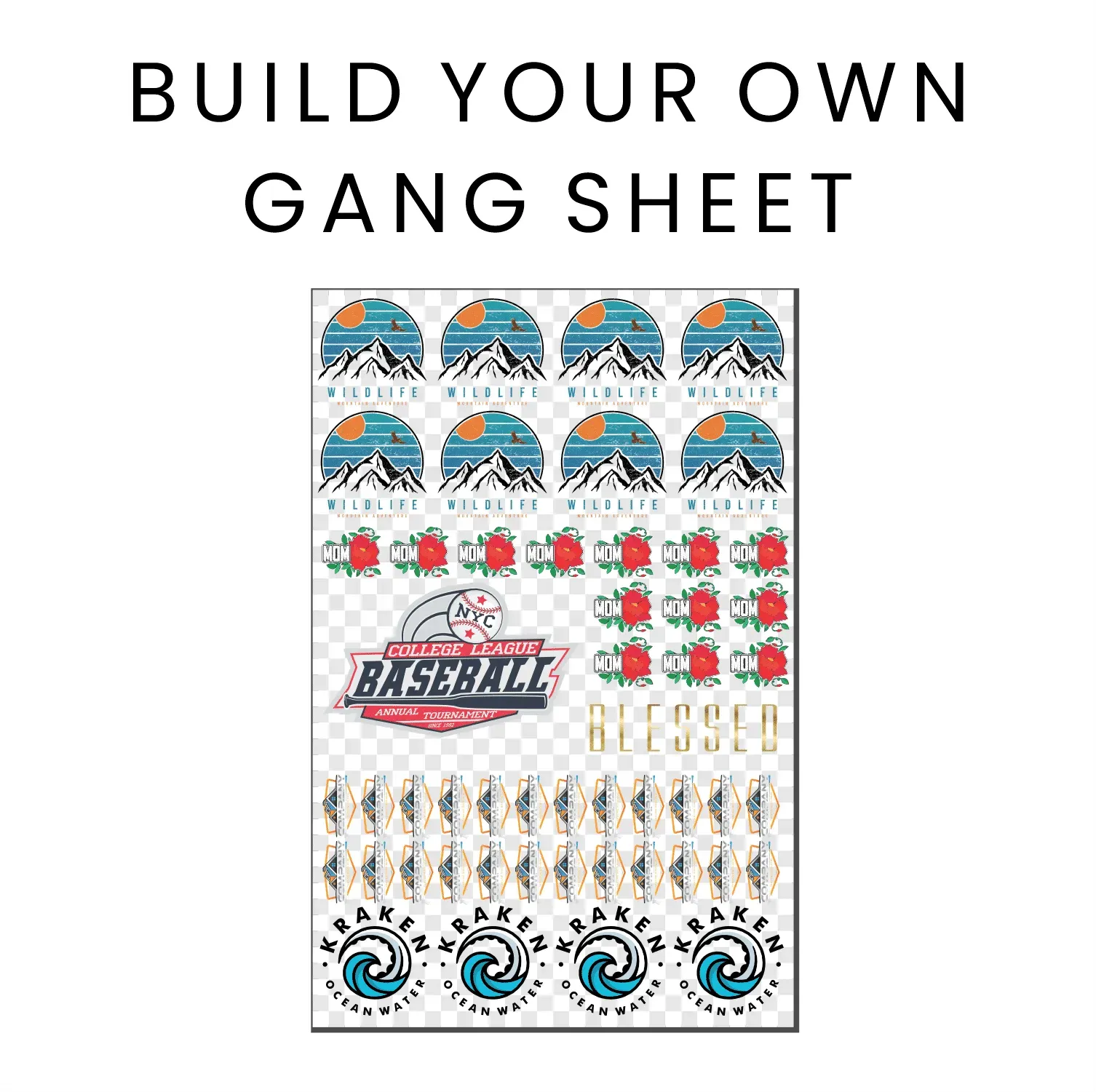Creating Stunning DTF Transfers: Your Step-by-Step Guide
Creating stunning DTF transfers is an essential skill for anyone looking to delve into the vibrant world of custom apparel printing. This technique, known as Direct-to-Film printing, allows artists and entrepreneurs alike to transfer intricate designs onto various fabrics with remarkable clarity and durability. In this guide, we will explore the DTF transfer process step by step, ensuring that you have all the tools you need to achieve outstanding results. With the right knowledge of DTF film, heat transfer printing techniques, and quality materials, your designs can genuinely stand out in a competitive market. Join us as we unlock the secrets to mastering DTF printing and elevate your creative projects to new heights!
As we delve into the realm of creating exceptional transfers using Direct-to-Film methods, it’s vital to understand that the DTF process is a game-changer in the custom apparel industry. This innovative printing technique utilizes specialized film to accurately capture and replicate designs on fabrics. Whether you’re a professional designer or an enthusiast, the world of transfer art offers a plethora of opportunities for customization and personalization. Embracing heat transfer technologies can significantly enhance the quality of your outputs and streamline your workflow. With a focus on high-resolution design, you’ll discover how to make your mark in the evolving market of custom textile printing.
Understanding the DTF Printing Process
DTF printing, or direct-to-film printing, is a transformative method for custom apparel printing that allows businesses and creators to produce high-quality, intricate designs. This technique involves printing a design onto a special film that will later be transferred to fabric. The DTF transfer process consists of several essential steps, including choosing the best materials, preparing quality artwork, and knowing how to effectively apply heat for the transfer. By understanding the core principles of DTF printing, one can avoid common pitfalls and achieve stunning results.
In addition to its efficiency, DTF printing offers versatility unmatched by other methods, such as traditional screen printing or heat transfer printing. The capability to print on various fabric types—from cotton to polyester—makes DTF a preferred choice for expanding product lines. Knowledge of the DTF film, inks, and application techniques is crucial for anyone looking to succeed in custom apparel, ensuring that finished products are not only visually appealing but also durable and reliable.
Essential Materials for DTF Transfers
Gathering the right materials is critical for producing stunning DTF transfers. Key components include a DTF-compatible printer, specialized DTF film designed to handle the printing process, and high-quality inks. Selecting a printer that can produce vibrant colors and fine details is vital, as is choosing the appropriate DTF film, which can impact the final outcome. For best results, invest in water-based DTF inks that provide excellent adhesion and are safe for various fabrics.
Another integral addition to your toolkit is the adhesive powder used in the transfer process. This powder not only helps to bond the design to the fabric but also influences the longevity and quality of your apparel. A reliable heat press is essential for setting the transfer securely onto the garments, and understanding how to use this equipment—such as adjusting the temperature and pressure—can significantly affect the finished product.
Creating Eye-Catching Designs for DTF Printing
Crafting compelling artwork is one of the most crucial stages in the DTF printing process. Using graphic design software like Adobe Illustrator or Photoshop allows designers to leverage their creativity while ensuring that their artwork meets production specifications. It’s critical to ensure that your designs are rendered in high resolution (at least 300 DPI) and formatted in the appropriate color profile, usually CMYK, for optimal color reproduction during the print process.
Designs that are vivid and unique will stand out in the crowded custom apparel market, driving interest and potential sales. Furthermore, understanding current design trends can help you create artwork that resonates with your target audience. Incorporating popular patterns, themes, or color schemes can lead to a more engaging product offering and enhance the effectiveness of your DTF transfers.
The Printing Phase: Precision and Technique
Once your design is ready, it’s time to initiate the printing phase of the DTF transfer process. Begin by loading the DTF film into your printer, and be sure to adjust the printer settings accordingly to achieve optimal ink saturation and print quality. An important step in this process is mirroring the design prior to printing to ensure that it appears correctly on the garment. This attention to detail is paramount in preventing costly mistakes later on.
It’s recommended to conduct test prints whenever possible to assess the printing settings and finalize the production workflow. This helps in identifying the best combination of temperatures and ink settings needed for various fabric types, ensuring a consistent quality across all prints. The precision you apply during the printing stage significantly influences the clarity and vibrancy of the final transfer, setting the foundation for the subsequent steps.
Applying Adhesive: A Critical Step
After printing your design, the next step involves applying adhesive powder, a critical yet often overlooked part of the DTF transfer process. While the ink is still wet, sprinkle a controlled amount of adhesive powder over the design, ensuring that it bonds well to the printed surface. This step requires balance; too much powder can create an uneven surface, while too little can compromise the design’s durability.
To ensure proper adhesion, it is essential to cure the printed film using a heat press at a low temperature for a few seconds. This process helps to set the adhesive, promoting a strong bond between the film and the ink. Mastering this step is crucial for achieving transfers that not only look great but last through numerous washes, which is especially important for any custom apparel business aiming for customer satisfaction.
Mastering the Heat Transfer Process
The heat transfer stage is where your design comes to life on the garment. Setting the heat press to appropriate temperatures, usually around 320°F to 330°F, is essential to ensure that the adhesive activates and bonds the design to the fabric properly. Placing the DTF film on the garment with care to align it perfectly, and pressing down firmly for the recommended duration (10 to 15 seconds) is critical to preventing issues like scorching or inadequate bonding.
Once you lift the heat press, allowing the transfer to cool slightly before peeling off the film is paramount. This cooling period helps secure the design more firmly to the fabric. Applying the correct technique in this step can mean the difference between a flawless transfer and one that peels or cracks over time. Continuous practice and refinement of your heat transfer process will maximize the quality and effectiveness of your DTF printing.
Frequently Asked Questions
What are the essential materials for creating stunning DTF transfers?
When creating stunning DTF transfers, essential materials include a DTF-compatible printer, specific DTF transfer film, water-based DTF inks, adhesive powder, and a reliable heat press. These components are crucial for ensuring a successful DTF printing process.
How do I properly design artwork for DTF printing?
To design artwork for DTF printing, use graphic design software and ensure your design is high resolution (300 DPI) with the CMYK color profile. This helps maintain clarity and vibrancy in your DTF transfers when printed on fabric.
What is the DTF transfer process and what steps are involved?
The DTF transfer process involves several key steps: preparing your materials, designing your artwork, printing on DTF film, applying adhesive powder, and using a heat press to transfer the design onto the fabric. Each step is vital for achieving stunning DTF transfers.
How can I ensure durability in my DTF printed garments?
To ensure durability in your DTF printed garments, carefully follow the heat transfer process, including preheating your heat press and monitoring wash conditions. Testing the prints by washing inside out on cold settings can also prolong the lifespan of your DTF transfers.
What recent trends are affecting DTF printing in custom apparel?
Recent trends in DTF printing for custom apparel include an increased focus on quality control and sustainability. Many providers are now offering eco-friendly options, such as biodegradable films and water-based inks, appealing to consumers who prioritize environmentally sustainable practices.
Is DTF printing suitable for all types of fabrics?
Yes, DTF printing is versatile and can be used on a variety of fabrics, including cotton, polyester, and blends. However, testing your DTF transfers on different fabric types is recommended to ensure optimal adhesion and print quality.
| Key Steps | Details |
|---|---|
| Materials Needed | Gather all necessary materials including DTF printer, DTF film, water-based inks, adhesive powder, and heat press. |
| Design Creation | Create high-resolution designs (300 DPI) using graphic design software; ensure correct color profile. |
| Printing the Design | Load DTF film into the printer, adjust settings, and ensure the design is mirrored before printing. |
| Applying Adhesive | Sprinkle adhesive powder over wet ink, shake off excess, and cure with a heat press. |
| Heat Transfer | Preheat heat press, align the DTF film on fabric, and press for 10 to 15 seconds. |
| Post-Processing | Test durability of the transfer by washing carefully and monitoring for wear. |
Summary
Creating stunning DTF transfers is an engaging and fulfilling process that marries artistic vision with technical know-how. This guide outlines the essential steps to master the art of DTF printing, including selecting the right materials, crafting high-quality designs, executing precise printing techniques, and ensuring excellent durability of your creations. As you explore these methods, you’ll discover how DTF printing not only enhances your artistic capabilities but also meets the demands of an ever-evolving market focused on quality and creativity. By incorporating these effective strategies, you will be well on your way to producing vibrant and lasting custom apparel that impresses your customers.






